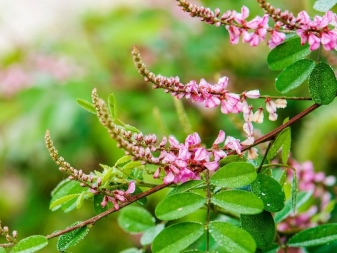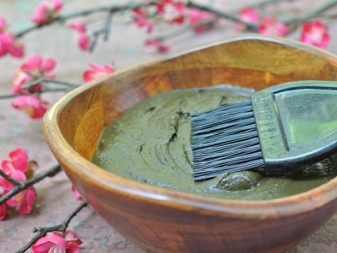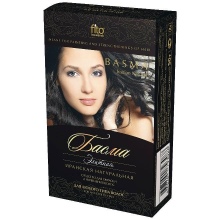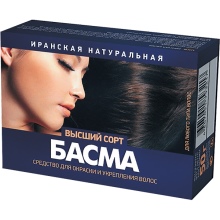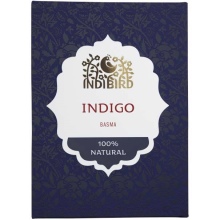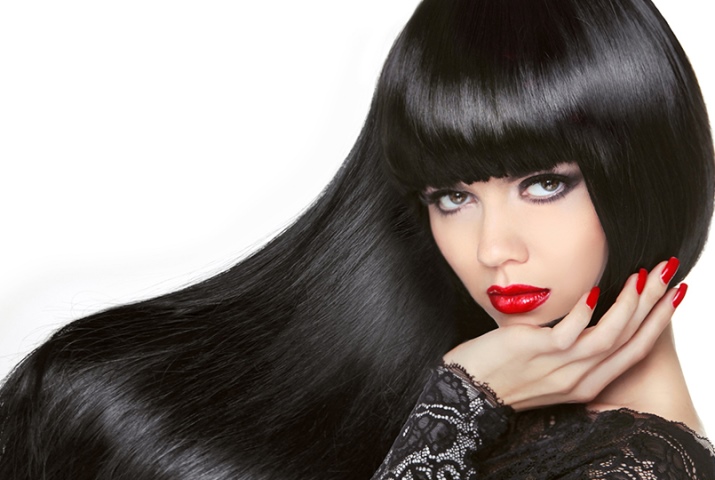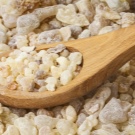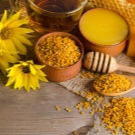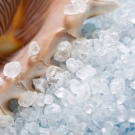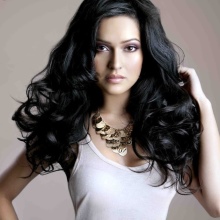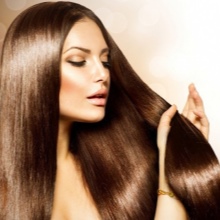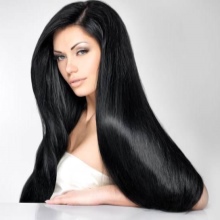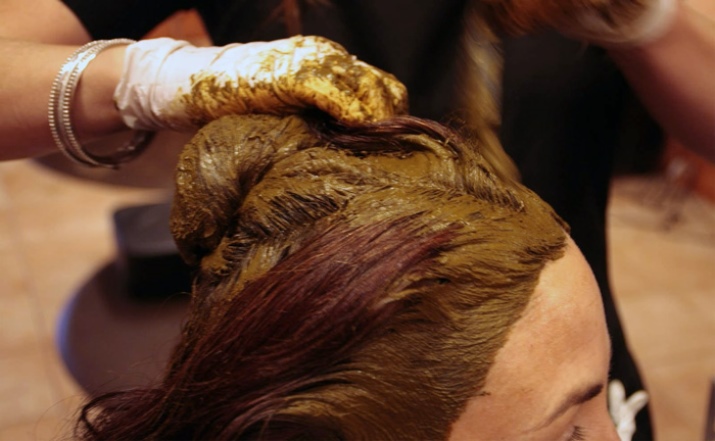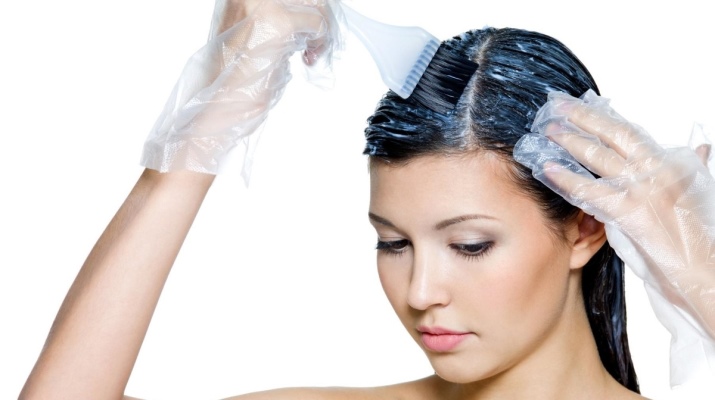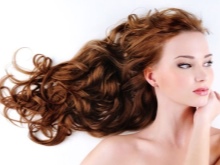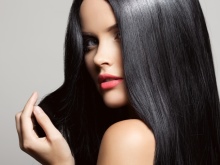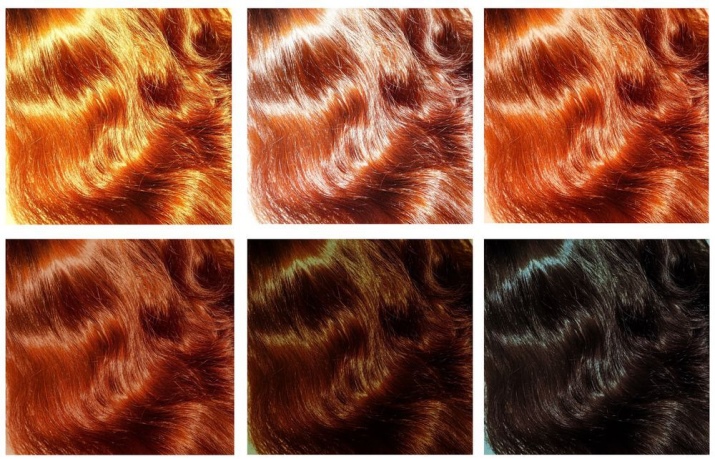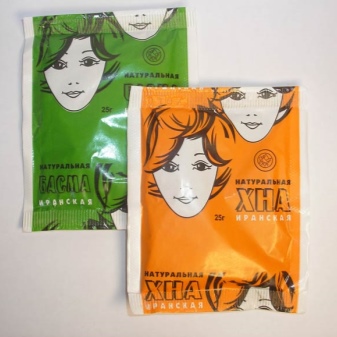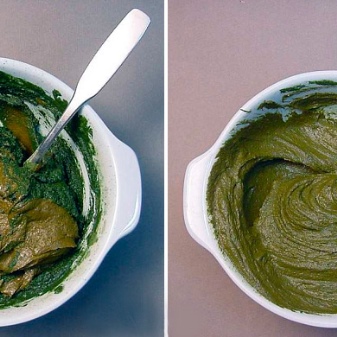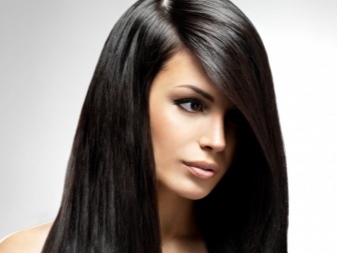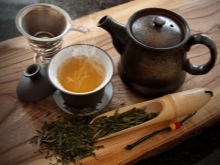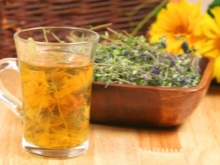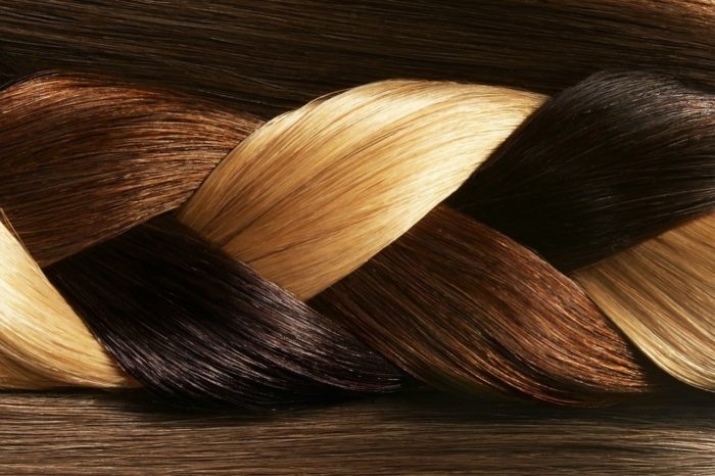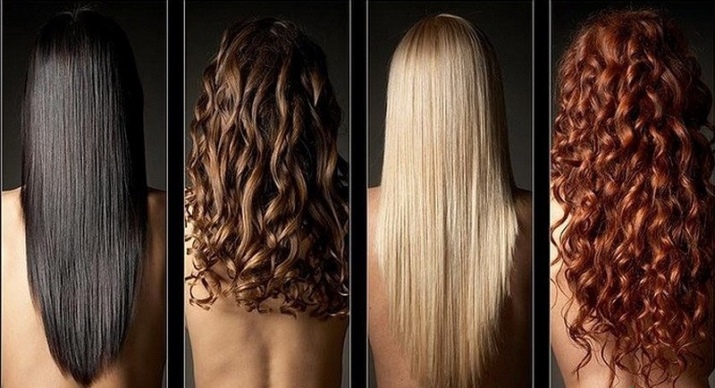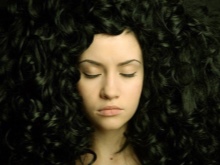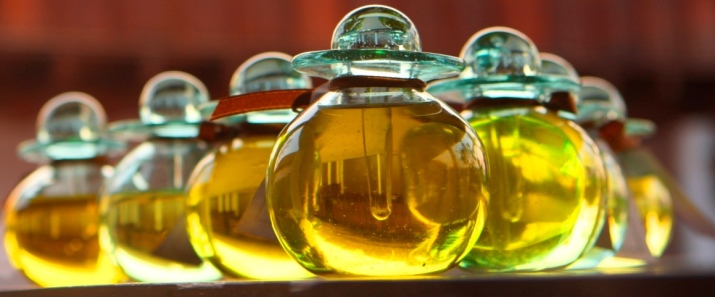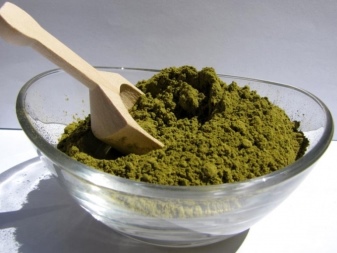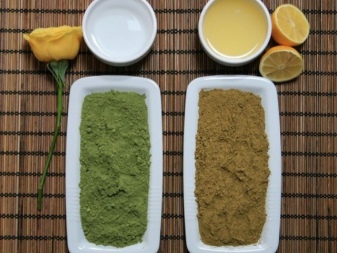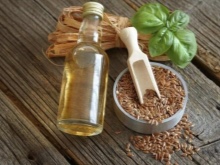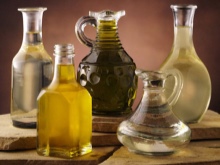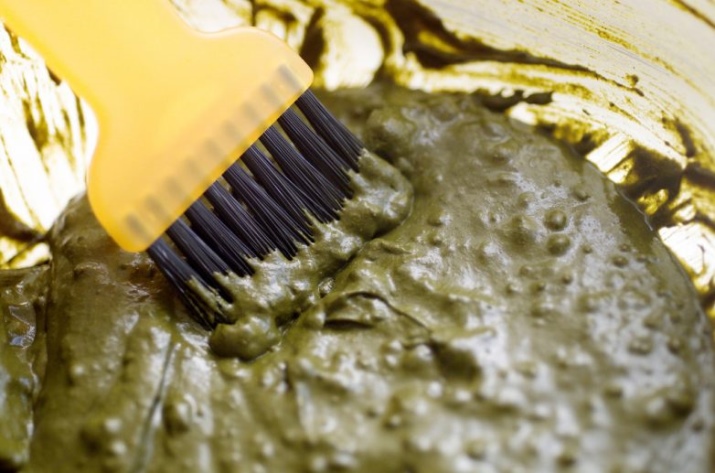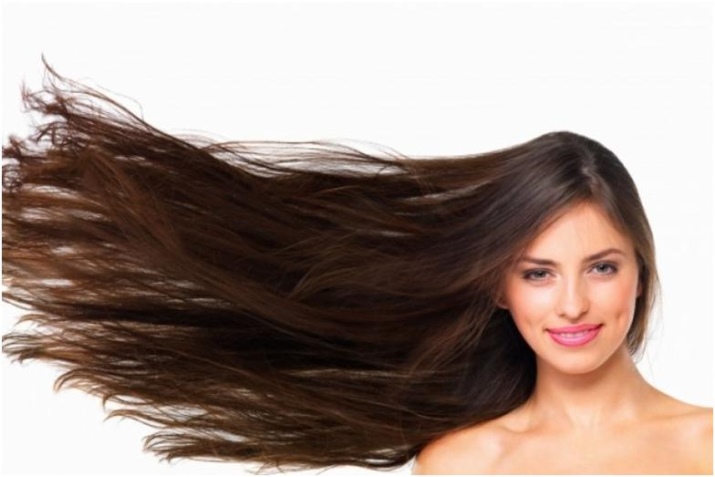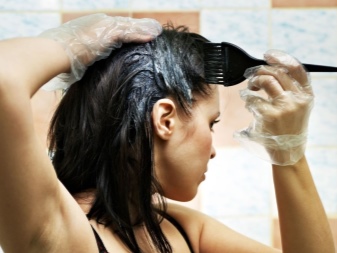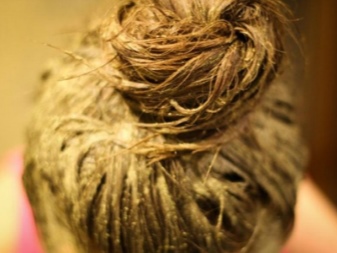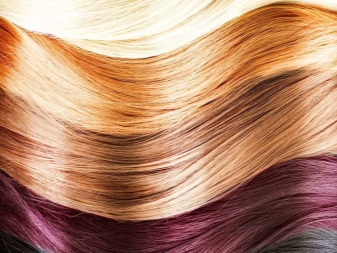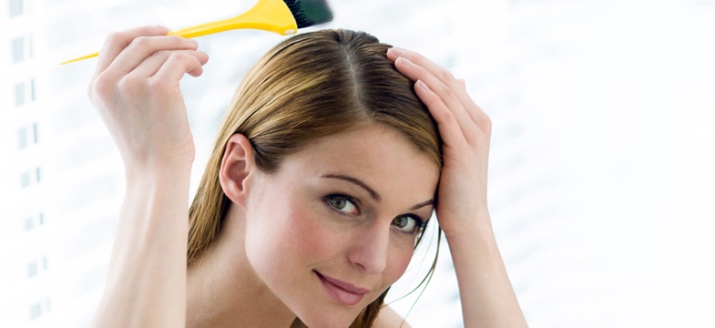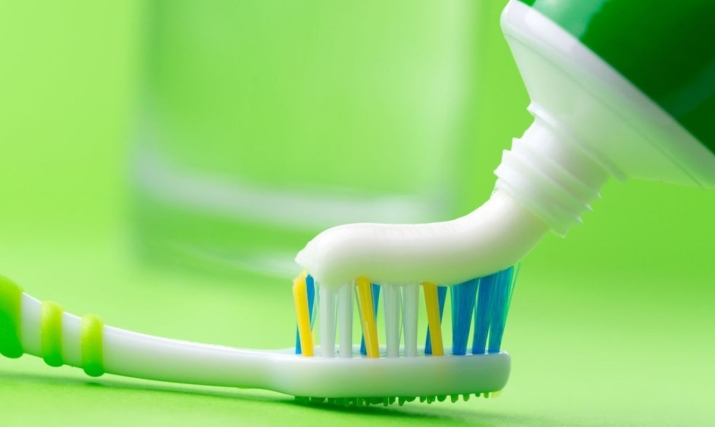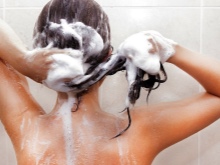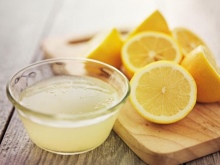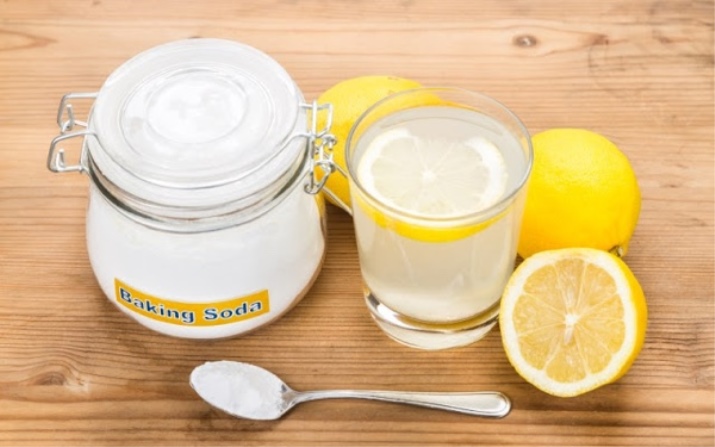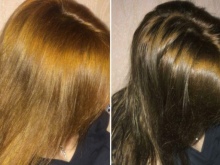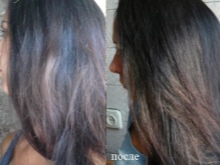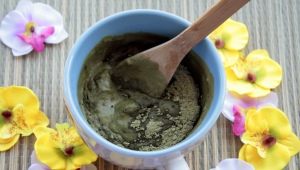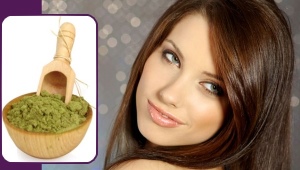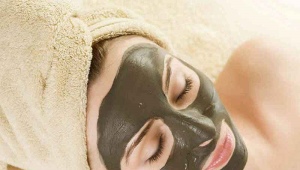Basma for hair

Among the cosmetics for hair dyes never lose their relevance. The modern market is full of interesting synthetic compositions, but natural, time-tested paints are not inferior to their positions.
What it is?
Basma is a natural coloring grayish-green powdery substance obtained from the leaves of Indigofera shrubs growing in countries with a tropical climate. As a basma dye was well known in ancient times: originally it was widely used for the manufacture of ink and dyeing fabrics in a bright blue color (color "indigo").
Basma is currently one of the most famous natural hair dyes. In the market of cosmetic products there are always the most popular varieties of it: Iranian, Turkish, Yemen. For many women, Indian Basma (also known as black henna), which provides soft and lasting coloring, is a common cosmetic.
What are they doing?
Basma is an absolutely natural paint, rich in biologically active substances and vitamins. Because of this, in addition to achieving a decorative effect, she has a healing effect on the skin - helps to maintain its natural acid balance, improves the condition and hair growth. The composition of Basma includes various resins, wax, mineral ingredients, tanning ingredients and vitamin C, which strengthens the hair.
Benefit and harm
Choosing Basma as a dye, you need to remember that dyeing hair requires not only certain knowledge, but also skills. Since this paint includes a lot of active ingredients, it can have not only beneficial, but also negative effects.
Compared with chemical dyes, the obvious advantages of this cosmetic product are due to its natural composition and, therefore, safety of use. Being an environmentally friendly product, Basma performs a number of therapeutic and cosmetic functions:
-
has an astringent effect;
-
works as an antimicrobial and anti-inflammatory agent;
-
heals wounds;
-
contributes to the disappearance of dandruff;
-
strengthens the roots and accelerates hair growth;
-
makes strands smooth, silky and shiny;
-
returns softness and elasticity to gray strands;
-
prevents cross-section and stops hair loss;
-
different anti-allergic;
-
helps to increase the volume of hair.
Among the disadvantages of Basma usually include:
-
the complexity and duration of the staining procedure;
-
the lack of a 100% ability to get the planned color even taking into account such natural properties as thickness, length, thickness, color, structure, as well as susceptibility to dyes;
-
drying hair with constant use;
-
the duration of the process of leaching of the dye, if necessary, use another means;
-
the risk of a non-uniform staining result;
-
limited use for blond hair;
-
difficulty of impact on hard, thick, elastic curls;
-
the difficulty of determining the optimally balanced composition of the dye to obtain the planned shade;
-
the need for regular tinting strands;
-
the inability to use for previously painted hair.
When using basma it is necessary to take into account its properties: being a strong dye, it adversely affects the skin.
Colored spots on the skin, traces of its application, look unattractive and wash off for a long time and difficult. Since you have to apply it with your hands, first of all, it is harmful to hands, so dyeing should be done with gloves
It has a negative effect not only on the hands, but also on those areas of the scalp and neck, with which it interacts directly. To prevent this, scalp pre-lubricated with cream or petroleum jelly, to ensure that the fatty agent is not on the hair, because the oiled areas do not perceive the dye. It will not be superfluous to protect the neck area with a napkin or cotton roll. To protect clothing, you can use any thick fabric or cape.
How many days will it get dark?
After painting, women are often concerned about how soon the strands will darken. Pigment hair saturation gradually: after washing off the dye, you will immediately see a new tone, which will change on average for 6 hours, becoming more concentrated. The completion of the dyeing process at the level of the hair structure takes about 3 days.
What color does it give?
Basma gives you the opportunity to experience a wide range of colors and shades - starting with the typical black dye and ending with light brown. However, it is almost impossible to ensure that the planned color is absolutely accurate, since along with the length, such natural data of hair as its structure, thickness, stiffness, natural color and many other nuances influence the result.
Choosing the desired shade for the hairstyle, first of all, it is necessary to deal with the most common standard formulas offered by the ratio of basma and henna, since it is they who primarily determine the color differences.
So, to get chestnut tone, basma and henna are taken in equal quantities. To give the curls a bronze tint, the amount of henna should be 2 times the amount of Basma. If your goal is to dye your hair black as pitch, then you need to take Basmy 2-3 times more than henna.
When working on the selected shade, one should not underestimate the temporal parameters of the staining procedure. This means that in the process of studying a particular recipe, it is necessary to pay attention not only to the proportion of the dye components, but also to the duration of its stay on the hair.
If you are ready to experiment with the dye, then you should look more closely at the recipes that allow you to get quite rare shades.
For example, the stylish color of a black tulip (black with purple ebb) is achieved by combining one part of henna with two parts of basma and adding two tablespoons of freshly squeezed beetroot juice to the mixture. The composition should be kept on the strands for about an hour.
When coloring hair in chocolate color, a mixture of basma and henna in a 2: 1 ratio is used as a base, which is recommended to keep on the curls for no more than 2 hours. It should be borne in mind that dyeing light-brown hair into a chocolate color is a more labor-intensive process, since natural light tonality requires such a procedure two or three times.
For those who are keen on searching for hairstyles of non-standard color solutions, experts suggest using additional natural ingredients more widely in the form of decoctions. For these purposes There are numerous recipes based on the use of medicinal herbs, flowers, tea and coffee.
Can everyone use it?
Basma is an absolutely safe product, its application does not have any restrictions related to the state of health of a woman. This paint can be used even during pregnancy, while breastfeeding.
However, certain restrictions on the use of basma impose qualitative characteristics of a woman’s hair. In this regard, it is important to remember that the method of working with this dye and the result obtained generally depend on 2 important properties of hair: their health and color.
It is well known that the best result is achieved if the coloring matter is applied to healthy hair.Coloring "tired" discolored and brittle strands usually leads to unpredictable results. In this case, there is a real danger of acquiring multi-colored strands: greenish, pink-tinted or blue.
As a dye Basma has a rather wide range of applications: it is effective when applied to dark and black, light brown and red hair. However, it is not recommended for dyeing blond hair.
Basma generally guarantees color stability over several months. However, under the influence of a number of factors, curls may acquire shades of a reddish-violet gamut, which is especially characteristic of dark hair. Therefore, brunettes are usually advised to maintain the required tone with the help of timely tinting strands.
Effective basma and gray hair. It is important that it does not harm their structure.
Coloring gray hair Basma is carried out in stages. At the first stage henna is applied to the strands, and at the second stage, after washing off the henna, they are covered with basma. Depending on the color chosen, each of the formulations must be kept on the hair for a specific formulation time. For example, to get a shade of “sandy blonde” you need no more than 2-3 minutes. To achieve the effect associated with natural brown hair - half an hour, and to give the hairstyle a rich chocolate color - three quarters of an hour.
You will learn about the properties of basma and henna and their proportions in the hair dye mix from the following video.
How often can I use?
Basma refers to potent dyes. As a result, it must be completely washed off the hair, if you decide to dye your hair with some other means, synthetic or natural. It is believed that It takes at least a month to restore hair after applying basma, and in some cases it may take more time. For eliminating traces of basma use, decoupling (i.e., gentle removal of color spots left after dyeing or inappropriate shade) helps well.
If you are among the staunch fans of basma and are not going to give it up, pay more attention to the result of its impact on the hair. The fact is that Basma tannic acid composition under certain conditions tends to cause over-drying of hair. To prevent this, one of the oils must be introduced into the dye, for example, jojoba, almond or olive. However, even with the observance of all the preventive rules, cosmetologists do not recommend, especially in the case of light and thin hair, to apply Basma more often than once every 2-3 months.
In general, the time mode of use of this dye depends on a combination of factors - individual properties of the hair, the quality of the means used and the technological literacy of the user.
How to breed?
Those who do not have experience with Basma often ask how to make Basma properly. Brew it to be with henna, while you can use herbal decoctions. In order to properly dilute basma, it is necessary to strictly follow the recommendations developed by professionals. Preparation of the composition requires that the powder be placed in a deep porcelain, ceramic or glass bowl and poured boiling water (its temperature should approach 90? C).
For mixing the composition, it is necessary to prepare a wooden spoon, because the metal can not be used: when in contact with the metal in the paint chemical processes occur, leading to an unexpected change in hair color.
After bringing the paint to the state of thoroughly mixed thick sour cream, add a little glycerin, cosmetic oil or flaxseed broth. This small technological subtlety will help reduce the risk of run-off applied to the hair composition, as well as subsequently facilitate the process of washing it.
It is better to apply the dyeing composition with a more liquid consistency on long hair, which will help to avoid the appearance of badly painted areas on the strands.
Hair should be prepared for the planned procedure in advance: they must be clean. Dye can cover both wet and dry strands. However, we must remember that the Basma is applied only hot, so make it more convenient and safer with a brush.
How to paint?
Basma hair dyeing is a rather laborious process that requires adherence to strict rules, deviation from which leads to deep disappointment. The matter is complicated by the fact that any errors that have been made are very difficult to eliminate.
Despite this, Basma retains its popularity, and painting it is carried out not only in the cabin, but also at home. However, one should not forget that success is achieved only if the step-by-step instruction on the use of this dye is your indispensable companion at each stage of work.
The basic rule that determines the specifics of working with Basma is that It can not be used as an independent coloring agent: it gives a greenish shade to light strands, and a bluish tone to dark curls. For this reason, it is always combined with any other dye, most often with henna.
Basma and henna can be applied simultaneously, in the same composition, but can also be applied separately.
The preparation of a single mixture of these substances is usually preferable for many, since it helps to save time. In this case, these substances are diluted in the same container in compliance with the selected proportion. The resulting mixture can be applied to both wet and dry hair. Wash off the paint without using shampoo.
If you constantly highlight, you should remember that after it you can never use basma or henna. This is due to the fact that the interaction of chemical and natural compounds always leads to unpredictable, but necessarily negative results.
Many lovers of Basma are interested in the question of whether there are any special rules for its application. Cosmetologists claim that The conventional method of covering the hair with a basma is quite simple: you first need to apply paint in the back of the head, then move to the crown, and at the end - to the temples. Bangs stained last. After completing the painting, many cover the head with warming agents. However, it is often noted that the use / non-use of heat insulation materials (polyethylene, towels or heat insulation cap) also affects the quality of dyed hair: the effect of shiny hair is achieved with heat insulation, and the haze effect is without them.
How to fix the result?
The quality of hair dyeing depends not only on their natural properties, but also on how correctly you were able to calculate the time required to fix the effect of the dye. To avoid mistakes, trying to achieve the desired color effect, it is safest to test one of them before dyeing the strands: In this case, you will be able to correctly calculate the time required to obtain the planned shade.
At the same time, when determining the temporal parameters of the action of basma it is possible to rely on a very general, but reflecting the real trend, rule. It boils down to the following: the richer and darker the hair color, the thicker and tougher they are, the longer the dye will work.
When choosing a dye, it is important to remember that no matter how much you want to try out all the possibilities of Basma, it cannot be applied to dyed hair and hair with chemical waving.
To fix the resulting color after dyeing the hair, they cannot be washed using shampoo for another 3 days.
How to wash off?
Basma is a strong dye, so after dyeing it is often a question of how to wash your hands. It is especially difficult to remove the paint from under the nails. As a rule, soap and shampoo help weakly. Those who have encountered this problem are advised to use ordinary toothpaste: it needs to rub the soiled places for a long time, and then apply a balm on them.
How to reduce from hair?
Basma solution is washed off with warm water for quite a long time, while shampoo is not used. Sometimes after washing the composition, a shade of green appears on the strands. Such a greenish color disappears a couple of days after the oxidation of basma.
If the result of the staining did not satisfy you, The dye can be removed by washing the hair with shampoo, and after that, lighten the strands with lemon juice, which needs to be washed off 10 minutes after using it.
At home women often try to wash paint soda: According to the recipe, ½ lemon juice is added to the warm soda solution, and the resulting composition stays on the hair for a quarter of an hour. This procedure lightens hair by about 2 tones. However, it should be remembered that it is suitable for oily hair and is contraindicated for thin and dry.
Reviews
Today Basma is sold both in cosmetic departments and in supermarkets. She is represented by a variety of popular brands, but every woman has to decide for herself which one is the best, since in this matter it is most reliable to rely on her personal experience.
Despite the presence in the sale of a large number of synthetic dyes, differing in the widest range of colors and taking into account the natural characteristics of the hair, Basma still remains one of the most popular dyes. Despite certain difficulties arising from its use, many women give her preference because of her safe natural formula and ability to organically combine with many medicinal decoctions.
